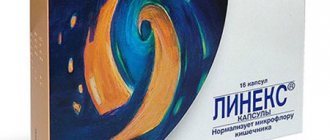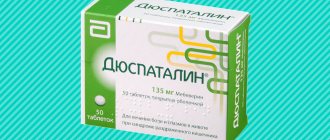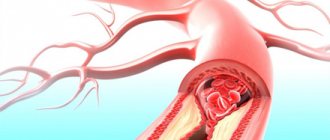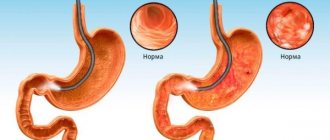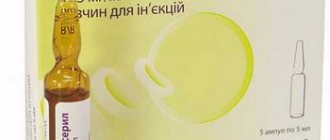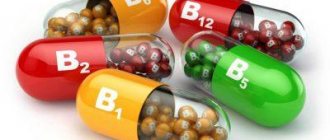Some facts
One of the most dangerous diseases of the digestive tract is peptic ulcer.
In this case, ulcers appear in the duodenum and stomach. The disorder is usually diagnosed in men between the ages of twenty and fifty. A health disorder occurs as a result of damage to the mucous membranes by a dangerous pathogenic microorganism - Helicobacter pylori. Clinical studies showed that about 80% of volunteers were carriers of the microbe, but not everyone developed peptic ulcer disease.
https://www.youtube.com/watch?v=Yz9i0o0Mtjk
Several auxiliary factors contribute to the development of the pathological condition - hereditary predisposition, consumption of spicy, fried, salty foods, bad habits, in particular alcohol and smoking, long-term use of drugs with strong side effects, including corticosteroids and Aspirin.
A constant state of depression and increased anxiety can also provoke the appearance of defects in the mucous membrane. In this case, patients experience convulsive contraction of the blood vessels, as well as the muscles of the digestive organ. Lack of adequate nutrition increases the stomach's vulnerability to hydrochloric acid. As a result, the walls are digested by gastric juice.
Helicobacter pylori is easily transmitted through kissing, failure to comply with personal hygiene rules, and also through the use of shared utensils. The development of colonies of a pathogenic microbe can be recognized by pronounced painful sensations in the upper abdomen. As a rule, attacks occur at night. But even during the day, so-called hunger pains occur. To block them, just eat something.
Peptic ulcer disease is characterized by periodic onsets of pain. Exacerbation usually occurs in spring and autumn. According to experts, the most striking symptom of peptic ulcer disease is heartburn. A burning sensation occurs in the esophagus on average 120 minutes after eating. Patients also experience constipation, vomiting, and frequent belching. At the same time, appetite is maintained. There are cases when the disease proceeded without pronounced symptoms.
To eliminate these symptoms, experts often recommend taking antacid medications. The ranking of the most effective also includes Maalox. The medicine has a complex effect - it neutralizes hydrochloric acid, removes bile, and gently envelops the mucous membranes. After taking the medication, patients have increased intestinal motor functions. Maalox is also used to treat other diseases of the gastrointestinal tract.
Questions and answers about the drug "MAALOX"
https://youtu.be/IisTjPFHkFo
What diseases does Maalox help with?
The specialist answers:
Maalox is a combination drug that contains two active ingredients: aluminum hydroxide and magnesium hydroxide. It envelops the walls of the stomach and intestines, removes toxins and poisons from the body, and has a choleretic and carminative effect. When in the stomach, it neutralizes hydrochloric acid, thereby reducing the peptic activity of gastric juice and increasing intestinal motor functions.
Maalox is prescribed for diseases such as gastric and duodenal ulcers, reflux esophagitis, gastroduodenitis, paraesophageal hernia, heartburn. The medicine also helps to reduce the severity of epigastric pain and eliminate belching, heartburn after excessive consumption of ethanol, junk food, and certain medications (glucocorticosteroids, non-steroidal anti-inflammatory drugs).
Are there any analogues for the drug Maalox?
The specialist answers:
The following drugs prescribed for gastritis, ulcers, poisoning, gastroesophageal reflux and some other gastrointestinal diseases have a similar effect to Maalox:
- Maalox mini;
- Almagel, Almagel T, Almagel A, Almagel Neo (cheap analogues of the drug);
- Almox;
- Gastracid.
Also, choosing from existing analogues of the drug Maalox, the gastroenterologist can prescribe the patient Anacid forte, Alumag, Rennie, Domrid, Gastal, Taltsid, Kalgel, Phosphalugel, Inalan.
The patient should not replace Maalox with another drug on his own. Only a doctor can decide which drug and in what form of release will be most effective in diagnosing it.
Interaction with other drugs
It is not advisable to take Maalox simultaneously with Quinidine. The concentration of the latter drug may increase. Also, a remedy for heartburn may reduce the effectiveness of treatment with Diflunazole, Ethambutol, Atenolol. Therefore, you need to wait at least four hours before taking the listed medications after using Maalox.
The drug belongs to the group of antacid drugs and is used in the treatment of diseases of the gastrointestinal tract. The use of Maalox helps to achieve a rapid therapeutic effect. According to the manufacturer, the product almost instantly relieves heartburn, helps cope with stomach pain, protects the mucous membrane from gastric juice, reduces the effects of hydrochloric acid and promotes the regeneration of soft tissues.
Maalox is available in three forms: chewable tablets, suspension in bottles and sachets. Tablets come in two types: with and without added sugar, which allows people with diabetes or patients on a diet to choose a more convenient form of the drug. Tablets are sold in cardboard packs of 10, 20 or 40 pieces.
| Amount of active ingredient per 1 dose of suspension | Amount of active ingredient per 1 dose tablet | ||
| Suspension in a bottle, mg/ml | Suspension in sachets, mg/ml | Tablets, mg | |
| aluminum concentration | 525/15 | 460/4,3 | 400 |
| magnesium concentration | 500/15 | 400/4,3 | 400 |
| Suspension | Pills | ||
| Auxiliary components | Sodium saccharinate, peppermint leaf oil, mannitol, citric acid monohydrate, hydrogen peroxide, hydrochloric acid, sorbitol, purified water. | starch with sucrose, sodium saccharinate, sorbitol, magnesium stearate, mannitol, mint flavor. | |
The mechanism of action of Maalox is based on the interaction of active components, due to which the drug has the following effects:
- Antacid - magnesium and aluminum salts formed as a result of a chemical reaction neutralize the hydrochloric acid of gastric juice, reduce the overall acidity of the stomach, and provide protection for the mucous membranes of the gastrointestinal tract.
- Adsorbent - aluminum algeldrat binds toxic substances, facilitating their removal from the body along with feces.
- Enveloping - a protective lining of the stomach formed by magnesium, ensures a decrease in acidity for a long period of time and even after its partial convergence, hypersecretion does not form in the stomach, which provokes the appearance of such unpleasant symptoms as bloating, heaviness, and flatulence.
The packaged form of the suspension is designed to stop the appearance of heartburn and acid belching caused by any reason. When the solution in bottles and tablet form helps eliminate all the symptoms that appear in the following conditions or diseases:
- exacerbation of peptic ulcer of the stomach or duodenum;
- hernia at the esophageal opening of the diaphragm;
- reflux esophagitis;
- gastritis or gastroenteritis with increased stomach acidity;
- dyspepsia of the digestive tract - heartburn, stomach pain, sour belching, heaviness - caused by taking medications, poor diet, abuse of coffee, cigarettes or alcohol.
Instructions for use
The drug Maalox is used either situationally or for long-term treatment of various diseases of the gastrointestinal tract, as well as for alcohol and food poisoning. The specificity of the drug is that it actually does not have a systemic effect.
Indications for use
The drug Maalox has the following indications for use:
- Peptic ulcer – in part of the duodenum and stomach (acute phase);
- Reflux esophagitis;
- Discomfort, sour belching, epigastric pain, as well as heartburn, other dyspeptic symptoms associated with errors in diet or excessive consumption of coffee, sweet carbonated drinks, nicotine, alcohol;
- Symptomatic ulcers with various specific origins;
- Acute and chronic gastroduodenitis in the acute phase, both with increased and normal secretory function;
- Erosion in part of the mucous membrane in the upper gastrointestinal tract;
- Acute pancreatitis and exacerbations of chronic pancreatitis;
- Hernia in part of the secretory opening of the diaphragm;
- Hyperphosphatemia;
- As an element of complex therapy for fermentative or putrefactive dyspepsia;
- Flatulence and related conditions.
Release form and composition
Maalox has several specific release forms, slightly different in composition in terms of the volume of active and auxiliary substances.
Suspension intended for oral administration, 250 ml bottle. Contains (per 100 ml):
Active substances:
- Magnesium hydroxide in gel form – 4 grams;
- Aluminum hydroxide in gel form - only 3.5 grams.
Excipients:
- Sodium saccharinate;
- Hydrochloric acid 10%;
- Citric acid monohydrate;
- Peppermint oil;
- Sorbitol 70%;
- Hydrogen peroxide;
- Methyl parahydroxybenzoate;
- Propyl parahydroxybenzoate;
- Mannitol;
- Purified water.
Twenty tablets (chewable) in blisters (available in sugar-free and sugar-free versions). Contains per tablet.
A pack of thirty sachets dosed at 15 milliliters of suspension, intended for oral administration. Contains (one 15 ml sachet):
Active substances:
- Aluminum hydroxide in the form of a gel - only 525 milligrams;
- Magnesium hydroxide in gel form – 600 milligrams.
Mode of application
Tablets are taken by adolescents over fifteen years of age and adults - one or two tablets three to four times a day, no later than one to two hours after meals and at night.
Reflux esophagitis - the drug must be taken a short time (60-30 minutes) after eating. The maximum number of times you can take the drug is six times a day.
The suspension in a bottle is taken by adolescents over fifteen years of age and by adults - 15 milligrams (one tablespoon), three or four times a day, no later than one or two hours after meals and immediately at night.
The bottle must be shaken before use. It is important to ensure that the dose does not exceed six tablespoons per day.
In case of gastric ulcer, the drug is taken thirty minutes before meals.
The suspension in sachets (sachets) is taken by adolescents over fifteen years of age and by adults - 15 milligrams (one sachet), three or four times a day, no later than one to two hours after meals and at night.
Before use, the suspension must be homogenized - it must be kneaded with your fingers, thoroughly, without opening the bag. The suspension is taken directly from the sachet into the mouth or into a spoon; there is no need to dilute the suspension. It is necessary to ensure that the dose does not exceed six sachets per day (no more than 90 milliliters of suspension per day).
Interaction with other drugs
It is necessary to observe an interval of two hours between the times of using Maalox and other drugs and a four-hour interval in the case of using fluoroquinolones.
- If the drug is used concomitantly with quinidine , there is a possibility of increased serum concentrations of quinidine and there is a possibility of developing a quinidine overdose;
- If the drug is used simultaneously with salicylates , there is an increase in the excretion of salicylates in the urine;
- The risk of a decrease in the level of effectiveness when binding potassium to the resin, as well as the development of metabolic alkalosis, in the case of patients with renal failure when using Maalox with kayexalate;
- There is a possibility of increased plasma concentrations of aluminum when used with citrates.
In addition, Maalox reduces the absorption efficiency of a number of drugs (including cefdinir, ketoconazole, fluoroquinol and others) if taken without observing a two-hour interval.
Pharmacological properties
The research results confirmed the ability of the drug to neutralize free hydrochloric acid. The action of the medication does not stimulate the re-production of hydrochloric acid.
An increased acid-base index effectively reduces the activity of digestive juice. Also, the active ingredient minimizes the negative effects on the mucous membrane due to the drug’s ability to bind and remove gases, toxins and other pathogenic substances from the digestive system.
Aluminum and magnesium hydroxides are among the most effective means for treating acid-related diseases of the gastrointestinal tract by neutralizing hydrochloric acid. The listed components have a local effect. The active substances practically do not enter the systemic circulation, and therefore do not affect other organs.
And what is the mechanism of action
Magnesium and aluminum hydroxides interact with hydrochloric acid of the stomach - you remember that hydrochloric acid is involved in digestion? – and neutralizes it. The active ingredients of Maalox do not cause the “ricochet” effect characteristic of many absorbed antacid drugs, that is, they do not stimulate a new release of hydrochloric acid after its neutralization1. Maalox belongs to the group of non-absorbable antacids and acts carefully and gently: magnesium hydroxide neutralizes acid, stopping heartburn, and aluminum hydroxide helps maintain normal acidity of gastric juice.
Unlike absorbable antacids, which contain calcium carbonate, sodium carbonate, magnesium carbonate), when using Maalox, gas formation does not increase and flatulence and belching do not occur.
Maalox suspension has a combined therapeutic effect for diseases associated with reverse reflux of stomach contents2:
- neutralizes hydrochloric acid contained in the esophagus and stomach and adsorbs it on its surface;
- binds pepsin and other aggression factors (bile acids), preventing irritation of the mucous membrane;
- envelops the walls of the stomach, reducing the impact of damaging factors on the mucous membrane.
A rational combination of magnesium and aluminum containing components in the medicine minimizes the side effects of each of them separately and gives a therapeutic result with good tolerance.
Overdose
The main manual for the drug Maalox - instructions for use states that tablets and suspension are intended for the treatment of patients over 15 years of age. The tablets must be chewed or sucked thoroughly, and the liquid solution must be taken unchanged. Any form of Maalox should be taken after meals 1-2 hours or before bedtime.
Maalox tablets
To eliminate the unpleasant symptoms caused by increased stomach acidity in various diseases, the instructions for use advise taking 1-2 tablets an hour or two after meals or at night, but no more than 3-4 tablets per day. If the patient is diagnosed with reflux esophagitis, then the medicine should be taken 30 minutes after eating. The duration of such therapy is selected individually by the doctor, but, as a rule, for a period of 10 to 60 days.
If stomach discomfort occurs periodically, for example, after drinking alcohol or breaking a diet, then Maalox can be taken once in an amount of 1-2 pieces. The maximum permissible dosage is 12 tablets, and the number of doses is no more than 6 times. However, patients suffering from diabetes should choose a medicine that does not contain sugar.
Maalox in bags
The instructions advise that before opening the package of medicine, you should carefully mix the contents of the bag with your fingers. Maalox for gastritis is taken orally an hour and a half after a meal or when heartburn occurs in a dosage of 1 or 2 sachets. If the drug does not work, you can take Maalox again, but at least 2 hours after the previous dose. The course of such treatment should not exceed 2-3 months. If unpleasant sensations occur sporadically, take 1-2 sachets at a time.
https://www.youtube.com/watch?v=PTK0FrI6zxs
Before starting to take the suspension, it is recommended to shake the bottle vigorously several times, without turning the container upside down. The liquid is swallowed without dilution, but if after taking it there is an unpleasant taste in the mouth, you can drink a few sips of plain water. The duration of treatment usually ranges from 14 days to 3 months. The dosage of Maalox suspension depends on the type of disease:
- for acute gastritis, take 15 ml of suspension or 1 tablespoon of solution 1-2 hours after meals, 3-4 times a day;
- to protect the gastric mucosa during reflux esophagitis, drink 1 tablespoon of solution 30-60 minutes after eating;
- for peptic ulcers, drink the medicine half an hour before meals;
- if heartburn, heaviness, belching, or stomach pain occurs occasionally, the suspension can be drunk regardless of food intake.
If the list of prescriptions is grossly not followed, the frequency of administration is exceeded, or the daily dose is increased, the body may overdose on aluminum and magnesium compounds. Such conditions occur against the background of exacerbation of pain in the abdomen, severe vomiting and diarrhea. In older patients, intestinal motility may decrease, causing intestinal obstruction.
The dosage and regimen of use must be determined by a specialist in each individual case. Typically, patients are prescribed medication when acute pain occurs. The optimal single dose is one or two tablets. You should drink Maalox no earlier than 60 minutes after eating. Tablets have a better effect if they are dissolved or chewed.
The suspension must be pre-stirred. For one dose you will need fifteen milliliters of medication or the contents of one sachet.
Excessive use of the medication can provoke the development of severe pain in the epigastric region, diarrhea and vomiting. Treatment is based on symptoms.
When to use
Maalox suspension and tablets have the following indications for use:
- hernia in the opening of the diaphragm of the esophagus;
- attacks of constant ulcerative diseases of the epigastrium and duodenum;
- reflux esophagitis;
- dyspeptic manifestations - heartburn, pain and discomfort in the stomach, belching when deviating from the diet, excessive alcohol consumption, smoking;
- gastrodudeonitis of chronic and acute forms with increased or normal discharge in the acute period.
Composition and release form
There are several dosage forms: chewable tablets and suspension. The flat-cylindrical hard shell has a distinctive engraving (Mx). The kit includes tablets of 10, 20 or 40 pieces, instructions for use, and a cardboard box.
The liquid for internal use has a characteristic white tint. It has a pronounced mint aroma. You can purchase the product in several forms - fifteen milliliter sachets (thirty packets in a package) or a bottle in a dosage of 250 ml.
The composition differs depending on the type of drug. In both cases, the manufacturer uses aluminum hydroxide and magnesium hydroxide as the active component. The auxiliary components in chewable tablets include carbohydrates of plant origin, sorbitol, E 572, mannitol, and flavoring.
The suspension contains other additional substances - food additive E954, concentrated hydrogen chloride, mint oil, E330, hydrogen peroxide, E218, mannitol, sorbitol, purified water and E216.
What to choose, Maalox or Almagel
The composition of Almagel and Maalox is almost identical, since they contain aluminum-magnesium-hydroxide as active components. Therefore, their effects are also the same, and you can choose any drug that, for some subjective reason, a person likes more.
However, if a person is bothered by severe pain, then it is better to choose the Almagel A suspension, which additionally contains an analgesic component. If in a person, among the manifestations of increased acidity of gastric juice, increased gas formation with bloating and flatulence prevails, then the best option among these drugs would be Almagel Neo, which contains a component that eliminates this particular symptom. In cases where there is no severe pain or flatulence, you can choose any drug.
What helps, indications
Every person always has a risk of acquiring diseases associated with problems of the gastrointestinal tract.
Maalox, according to the instructions, is prescribed in the following cases:
- With a diagnosed peptic ulcer of the gastrointestinal tract.
- For the treatment of inflammation of the mucous membrane of the stomach and duodenum.
- In combination with other drugs in the treatment of inflammation of the esophageal mucosa caused by the reflux of gastric contents into the esophagus.
- For painful and uncomfortable sensations in the epigastric region, heartburn.
- For hiatal hernia.
- Can be used as a prophylaxis and for the treatment of dyspeptic disorders caused by taking potent drugs.
The tablet form of the drug should not be taken if you have individual hypersensitivity to one of the components of the drug. It is also not recommended to use Maalox in therapy for patients with severe forms of kidney dysfunction. Treatment of children under the age of twelve is possible only under the supervision of specialists.
The suspension can harm patients with a hereditary syndrome caused by a violation of the absorption of monosaccharides in the gastrointestinal tract, intolerance to fruit sugar, as well as a reduced level of phosphates in the blood below the physiologically necessary level. It is prohibited for patients under the age of fifteen to take this form of the drug.
All varieties contain the same list of contraindications. Thus, according to the instructions, taking the drug is strictly prohibited in case of severe renal failure, intolerance to maltitol, glucose or fructose. Maalox should not be taken by patients with severe renal failure or with individual intolerance to the components of the composition. You can take the medicine with caution if you have the following conditions or diseases:
- pregnancy and lactation;
- renal dysfunction;
- porphyria;
- Alzheimer's disease;
- lack of phosphates.
This remedy is prescribed for gastritis, peptic ulcers of the stomach and duodenum, pancreatitis and poisoning. Maalox removes toxins after poisoning, is effective against diarrhea associated with poisoning or the consequences of an improper diet, and also saves from heartburn. Treats most stomach diseases even in later stages.
Maalox mini is a white liquid solution similar to milk without sugar. The manufacturer presents the release of drugs as:
- chewable tablets (40 pcs. per pack);
- syrup;
- gel - suspension in sachets.
You can see his photo on the Internet. The active substance is aluminum and magnesium hydroxide. Ingredients: concentrated hydrochloric acid, citric acid monohydrate, mint leaf oil, mannitol, sodium saccharinate, sorbitol, water. Every person, before buying a product, wonders how much it costs. The cost is affected by the release form. So the price of tablets is 262 rubles, mini 30 pcs. – 737, suspension – 382.
The feedback about this product is mostly positive. The medicine quickly relieves pain and lasts quite a long time. Also, more than one review says that this medicine causes nausea. The main contraindications are renal failure and Alzheimer's disease. If the stomach acidity is low, the product is prohibited.
Side effects
In case of hypersensitivity, the side effect is itching, urticaria. Gastrointestinal tract – constipation. Impaired phosphorus levels and long-term use of Maalox can deplete phosphorus stores. An overdose, as a rule, is fraught with low blood pressure, drowsiness, weakness and abdominal pain. To prevent this from happening, you need to follow the instructions and stick to the appointment times.
The interaction of Maalox with other drugs is positive. No deterioration in its action was noted. The method of administration does not depend on additional medications. But when alcohol is present in the body, the medicine is not used.
Firstly, the remedy will not work, and secondly, there is a possibility of complex poisoning, even if the body is young. Watch the video to see how gastric juice is destroyed in this situation. Therefore, you need to find another option. Please note that pregnancy and early age of children require special attention from the doctor.
Where to choose
There are quite a lot of analogues of the drug Maalox. Most of them are complete analogues, both in terms of the substance contained in the drug and in terms of the mechanism of action. However, it is worth keeping in mind that antacids are symptomatic, that is, they temporarily eliminate discomfort without eliminating the problem. In other words, antacids do not cure gastritis and ulcers, they help control pain.
Of the presented analogues, Escape (a bismuth preparation) has an effective therapeutic effect, which is often prescribed for exacerbations of gastritis and ulcers. The drug is prescribed both in monotherapy and in combination, if required by the treatment of the patient’s disease. The active substance of the drug Escape envelops the stomach and forms a protective film on it, which heals its walls and protects them from hydrochloric acid. If the effect of conventional antacids goes away immediately after their withdrawal, then the effect of Escape is long-term, it effectively restores the damaged gastric mucosa.
Having analyzed the sample of Maalox analogues, we can conclude that the most effective replacement for this symptomatic drug will be Escape. However, it is worth noting that Escape is not a complete analogue of Maalox; it is a drug with a completely different mechanism of action and a different active agent. The cause of unpleasant dyspeptic symptoms is often much deeper, so our goal is not just to remove unpleasant sensations, but to protect the stomach from the development of gastritis and ulcers, which are very common in the modern rhythm of life, which Escape copes with quickly and effectively.
Use during pregnancy
Clinical studies involving women during pregnancy and breastfeeding have not been conducted. Tests on animals did not reveal the teratogenic effect of the active substances of the drug.
The manufacturer allows the use of the medicine by this category of patients, but only if the expected benefit to the mother outweighs the possible risk to the fetus. In addition, you will need regular monitoring by a doctor.
Laboratory tests on animals did not give a clear answer as to whether Maalox can harm the fetus. To date, no cases of negative effects of active substances on the intrauterine development of a child have been recorded. However, due to the lack of reliable data, the use of this medicine is permissible only after consultation with a doctor. If you follow all the instructions specified in the instructions, you can take Maalox while breastfeeding.
Additional instructions
Caution should be exercised when prescribing this antacid to patients with acute porphyria (including
in the anamnesis).
The drug does not affect the ability to concentrate, so driving is allowed during the treatment period.
Algedrate can cause constipation. In elderly patients, there is a risk of intestinal obstruction.
Encephalopathy may develop against the background of impaired renal excretory function.
During long-term course therapy, it is recommended to make adjustments to the diet; It should include more products containing phosphorus salts.
Side effects
The main category of side effects of the drug is the occurrence of phosphorus deficiency in the body, but only in the case of long-term or irregular use. There are also a number of other side effects.
Including (in extremely rare cases):
- Urticaria;
- Itching;
- Anaphylactic reactions;
- Angioedema;
- Constipation;
- Diarrhea;
- Hypermagnesemia;
- Hypophosphatemia;
- Hyperaluminemia.
The main side effects when taking Maalox can be associated with taking the drug with kidney failure or with a lack of phosphates in the diet.
Contraindications
Maalox is recommended for use by adolescents over fifteen years of age and adults. It is not recommended for use:
- In case of severe renal failure;
- In case of hypersensitivity to certain components of the drug;
- With hypophosphatemia;
- For Alzheimer's disease.
The drug should be taken with caution, especially for a long time or in large doses, in patients with renal failure, the elderly, those suffering from porphyria, during pregnancy and in cases of diabetes mellitus.
An overdose of the drug causes vomiting, diarrhea and stomach pain.
During pregnancy
During practical trials of the drug Maalox, no specific teratogenic effects were identified during use during pregnancy, however, there is a lack of clinical practice in using the drug,
which makes its use permissible only if it is probable that the potential benefits of the drug outweigh the potential risks.
Taking into account these specifics, Maalox is not recommended for use during pregnancy. There are no feeding restrictions.
Admission during lactation and pregnancy is possible only after prior consultation with a doctor.
When used simultaneously with citrates, the absorption of algeldrate increases, which may create certain health risks in people suffering from renal failure. When taking Maalox with quinidine, there is a risk of increasing serum concentrations of the latter. When combined with citrates, an increase in plasma concentrations of aluminum is possible.
- Acetylsalicylic acid;
- Histamine blockers;
- Fluoroquinolone;
- Sodium fluoride;
- Glucocorticosteroids;
- Chloroquine;
- Propranolol;
- Diflunisal;
- Digoxin;
- Bisphosphonates;
- Sodium polystyrene sulfate;
- Ethambutol;
- Isoniazid;
- Ketoconazole;
- Neuroleptics;
- Penicillamine;
- Tetracycline antibiotics;
- Atenolol;
- Metoprolol;
- Phosphorus-containing dietary supplements;
- Indomethacin;
- Lansoprazole;
- Lincosamide;
- Levothyroxine;
- Iron compounds;
- Fexofenadine.
If the instructions for use are followed, negative reactions of the body occur extremely rarely and, as a rule, are insignificantly expressed. All types of the drug can provoke the same side reactions:
- diarrhea or constipation;
- nausea with vomiting;
- changes in the sensitivity of taste buds;
- allergic reactions - itching, rashes, urticaria, Quincke's edema, anaphylactic shock;
- feeling of thirst;
- lowering blood pressure;
- calcium deposits in the kidneys;
- increased concentration of magnesium in urine;
- an increase in the amount of aluminum in the blood;
- decrease in phosphorus and calcium concentrations;
- osteomalacia;
- encephalopathy;
- microcytic anemia;
- complication of Alzheimer's disease;
- decreased reflexes.
As a rule, treatment with the drug does not provoke the development of unwanted reactions. But failure to follow the doctor’s recommendations can lead to allergies, including Quincke’s edema, urticaria, and itching.
In isolated cases, problems in the form of constipation or diarrhea have been reported in the digestive tract. Episodes of metabolic disorders are also known, but such failures have been recorded in patients who eat food with insufficient amounts of phosphates.
Indications for use
Based on the manufacturer's recommendations in the instructions, the drug is used to combat heartburn, eliminate heaviness and other negative symptoms of the stomach. The drug is used if pain occurs. "Maalox" improves the condition of such problems as:
- Chronic gastroduodenitis;
- Burning sensation in the gastrointestinal tract;
- Esophagitis and pain in the abdominal area;
- Ulcer, including the rectum during periods of complications of the disease;
- Belching, hiatal hernia.
Interesting! Manifestation of heartburn during pregnancy - provoking factors
It is possible to use the drug to eliminate unpleasant symptoms after coffee. Consumption after alcoholic beverages is not allowed. The use of Maalox is possible not only in case of unpleasant symptoms, but also as a prophylactic agent, for example, after taking anti-inflammatory drugs.
Contraindications
All contraindications must be divided into two categories:
Complete ones include:
- Use by children under 15 years of age;
- Fructose intolerance;
- Hypophosphatemia;
- Sensitivity to the components of the drug;
- Having problems with kidney function.
Among the relative prohibitions is the use by pregnant and nursing mothers, patients with Alzheimer's disease, and those undergoing hemodialysis. It is possible to use the drug for patients in this group, but with precautions.
Maalox and alcohol
The pharmacological company does not recommend using the product if ethanol residues are present in the body. There is a high probability of intoxication from this combination.
Drug interactions with other drugs produce only positive effects. There was no worsening of the effect on the body when taking Maalox for heartburn after drinking alcohol. Thanks to its antacid, adsorbent and enveloping properties, the product in the form of a suspension can alleviate the patient’s condition after drinking alcohol, protect the lining of the esophagus from the effects of toxins and neutralize some of the breakdown products of ethyl alcohol.
Contraindications
There are restrictions on use. The main contraindication is immune sensitivity to any substances included in the tablets or suspension (allergy). It is advisable to make an appointment with a doctor to rule out allergies or intolerances.
Other contraindications:
- Severe renal impairment.
- Age up to fifteen years.
- Phosphorus deficiency in the body.
- Intolerance to maltitol (tablet form without sugar.)
- Inability to digest fructose.
- Inability to absorb glucose or galactose.
- Deficiency of the enzyme sucrase or isomaltase.
The medication should be taken with caution if the following factors or conditions are present: porphyrin disease during hemodialysis, diabetes mellitus, Alzheimer's disease, and pregnancy.
Terms of sale and storage
The drug is dispensed from pharmacies without a doctor's prescription. The product must be stored at temperatures up to 25 degrees, out of reach of children. The shelf life of tablets is 5 years, oral suspensions are 3 years.
Maalox is sold in online pharmacies without a prescription.
The drug Maalox is stored at a temperature that should not exceed 25 degrees Celsius, out of the reach of children. The shelf life of the drug is three years. It is not recommended to use Maalox after the expiration date indicated on the package has expired.
Analogs
If the product does not suit you, you need to replace it. Russian pharmacies offer a number of the following analogues:
- 1. Phosphalugel
- 2. Almagel
- 3. Gastal
- 4. Omez
- 5. Smecta
- 6. Almol
- 7. Anacid forte
- 8. De Nol
The above analogue is cheap, but the therapeutic effect is the same. Information about each drug is available on medical websites.
The description of these drugs is the same, only Phosphalugel has fewer excipients in grams. The indications for the drugs are also identical. The manufacturer noted only two differences: Phosphalugel does not affect calcium metabolism, and the second drug inhibits this process. Maalox is prohibited for children under 15 years of age, Phosphalugel is allowed from birth. An analogue of the main medicine costs several times less, and the positive effects in both cases occur within 15 minutes.
If you compare these funds from the financial side, then Gaviscon is slightly cheaper. Its tablet has a pleasant taste, which is not noted in Maalox. However, the relieved effect of Gaviscon lasts much longer and has to be used more often. According to doctors, Gaviscon is safer for children's bodies.
In its category (non-systemic treatment of gastrointestinal disorders), Maalox is considered one of the most effective drugs, however, there are both cheaper and more expensive analogues of a similar type of action and composition of active substances.
There are drugs on the pharmaceutical market that are similar in composition or principle of action. Complete analogues of the drug are considered to be such products as: Gastal, Rennie, Inalan tablets, Phosphalugel gel and Gastroromazole suspension. Similar in principle:
- Almagel;
- Palmagel;
- Gestid;
- Coalgel;
- Altacid;
- Almol;
- Rivolox;
- Ajiflux;
- Alumag;
- Gastracid.
Several medications have a similar effect - Almol, De Nol, Gastal, Almagel, Smecta. You can take such medications instead of Maalox only after prior consultation with a specialist.
Maalox for poisoning
When intoxicated, the functioning of the digestive system is disrupted.
Maalox helps quickly remove toxic substances. It is recommended to take the medicine in any form immediately after diagnosing the first unpleasant symptoms. The drug forms a protective film on the mucous membrane, which speeds up the recovery process after poisoning. Maalox also reduces acidity in the stomach and helps get rid of negative symptoms.
In case of alcohol poisoning, Maalox controls the production of bile and normalizes the volume of hydrochloric acid in the stomach. Thanks to the adsorbing effect, it eliminates toxic substances - remnants of ethanol breakdown.
The suspension has an antacid and enveloping effect, which helps alleviate a person’s condition after drinking alcohol and protects the esophageal mucosa from the harmful effects of poison. In case of alcohol poisoning, take it according to the instructions.
It is recommended to remember that Maalox alone will not cope with the signs of poisoning. The drug is used in combination with other medications prescribed by a doctor. Maintaining proper nutrition and water regime will help enhance the effect of the product.

